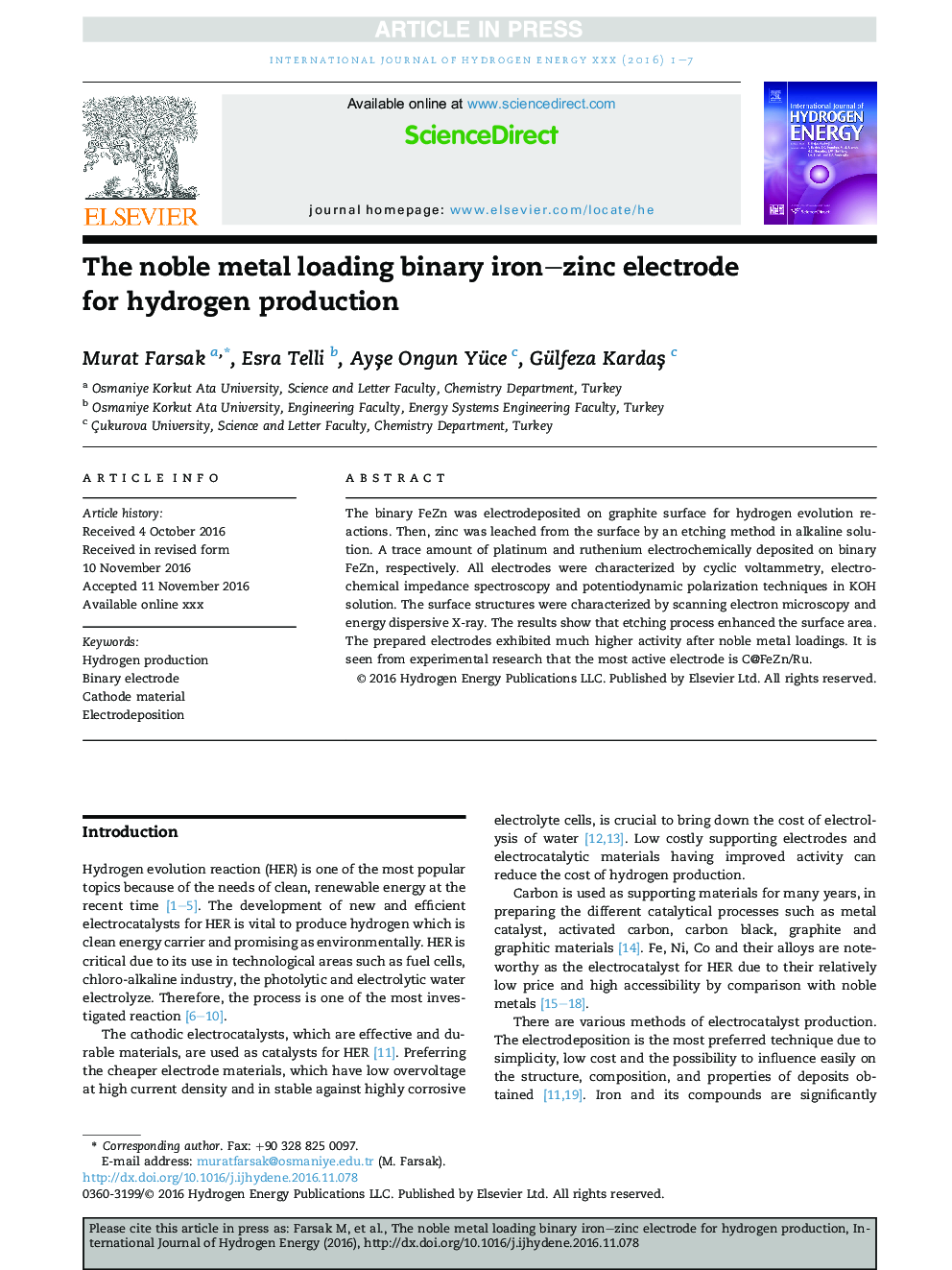| Article ID | Journal | Published Year | Pages | File Type |
|---|---|---|---|---|
| 5146086 | International Journal of Hydrogen Energy | 2017 | 7 Pages |
Abstract
The binary FeZn was electrodeposited on graphite surface for hydrogen evolution reactions. Then, zinc was leached from the surface by an etching method in alkaline solution. A trace amount of platinum and ruthenium electrochemically deposited on binary FeZn, respectively. All electrodes were characterized by cyclic voltammetry, electrochemical impedance spectroscopy and potentiodynamic polarization techniques in KOH solution. The surface structures were characterized by scanning electron microscopy and energy dispersive X-ray. The results show that etching process enhanced the surface area. The prepared electrodes exhibited much higher activity after noble metal loadings. It is seen from experimental research that the most active electrode is C@FeZn/Ru.
Related Topics
Physical Sciences and Engineering
Chemistry
Electrochemistry
Authors
Murat Farsak, Esra Telli, AyÅe Ongun Yüce, Gülfeza KardaÅ,
